In the dynamic world of basketball, the “bonus” is more than just a rule – it’s a strategic element that can significantly influence the outcome of a game. what does bonus mean in basketball.
This article offers an in-depth exploration of the basketball bonus rule, illuminating its role and impact in various competitions such as the NBA, NCAA, and high school basketball.
Understanding this rule is essential not only for players and coaches but also for fans seeking a deeper appreciation of basketball’s strategic complexities.
What Exactly is the Bonus in Basketball?
A Basic Overview The term “bonus” in basketball refers to a situation where a team is allowed to shoot free throws after the opposing team has committed a certain number of fouls.
This rule is a key aspect of basketball that helps maintain a fair and competitive environment by discouraging teams from committing excessive fouls.
How It Changes the Game The dynamics of a basketball game can shift dramatically once a team enters the bonus. The team with the bonus can exploit this situation by driving aggressively to draw fouls, knowing that each foul will result in free throw opportunities.
Conversely, the team that has committed the fouls must play more carefully, avoiding unnecessary contact that could send their opponents to the line.
The NBA Take on the Bonus Rule
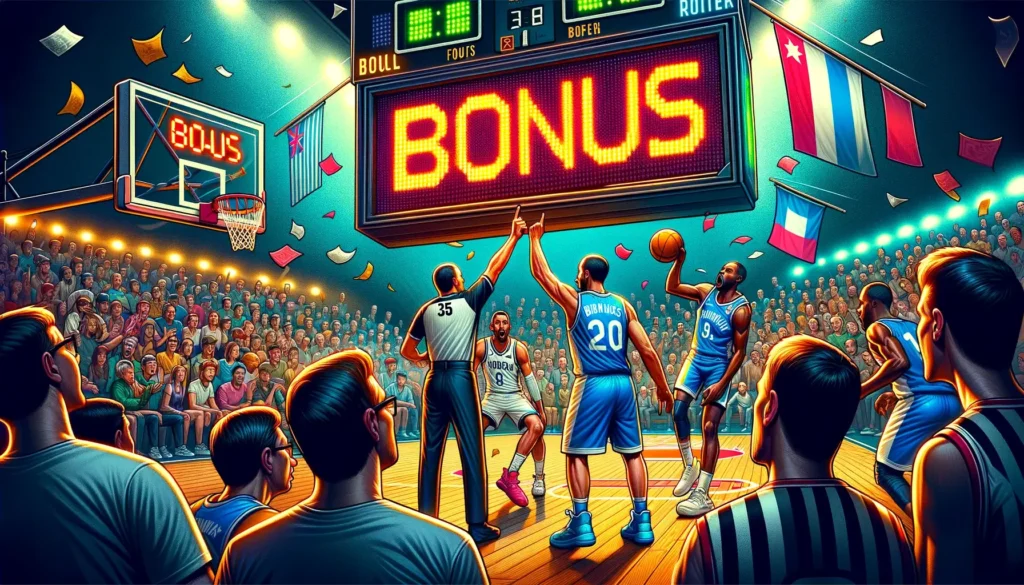
Implementation in Professional Basketball In the NBA, a team enters the bonus when the opposing team commits more than four team fouls in a quarter.
This implementation of the this rule adds a significant strategic layer to the game, as teams must balance aggressive defense with the risk of putting the opposing team in the bonus.
Differences from Other Leagues The NBA’s approach to the bonus rule differs from that of the NCAA and high school basketball, where the foul limits and the periods over which they accumulate vary.
These differences in the rule across leagues necessitate different strategic approaches and affect the overall pacing and style of the games.
Team Fouls and the Road to the Bonus in College Basketball League
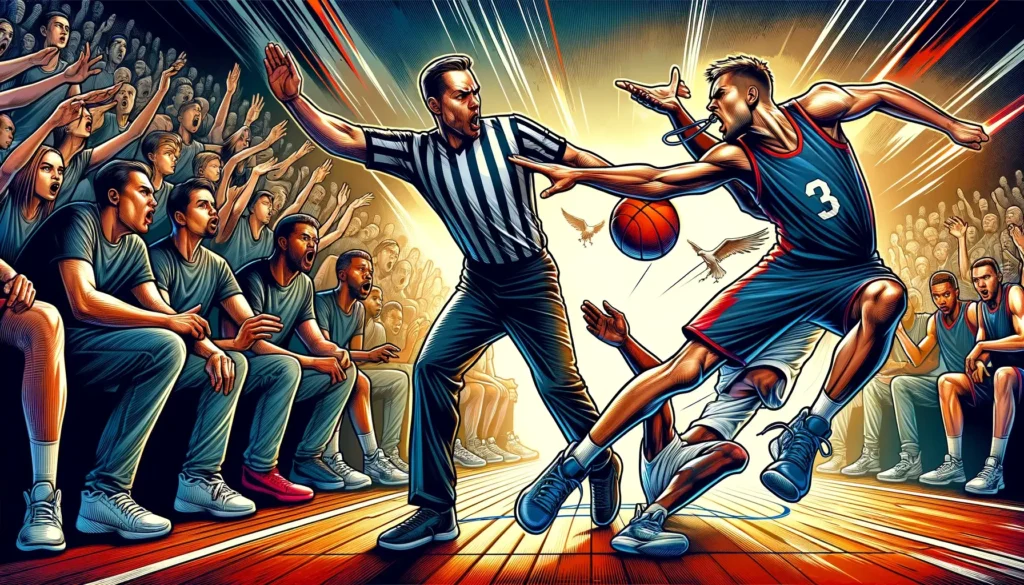
Calculating Team Fouls Team fouls are cumulative throughout a game, and reaching the bonus threshold is a critical moment.
It’s essential for teams to track these fouls, as entering the bonus can either be an advantage or a liability, depending on which side of the foul count they are on.
Variations Across Different Leagues The threshold for reaching the bonus in the NBA differs from that in NCAA and high school basketball.
For instance, in the NCAA, the bonus situation is triggered under slightly different conditions, taking into account the number of fouls committed in a half, as opposed to a quarter in the NBA.
This variation requires teams to adapt their strategies based on the specific rules of their league.
Read More: What Does Bonus Mean In Basketball?
The NCAA Unique Bonus Structure
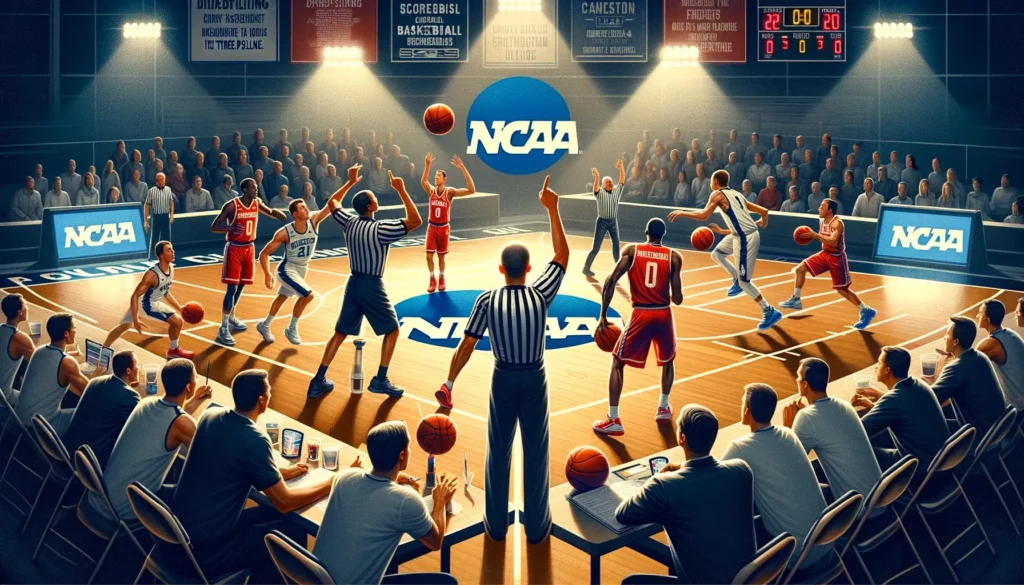
NCAA Rules Explained In NCAA basketball, the bonus rule is activated when a team commits seven fouls in a half. Upon reaching seven fouls, the opposing team is awarded a “one-and-one” free throw opportunity – if the player makes the first shot, they get a second; if they miss, the ball is live.
Impact on College Basketball Games The bonus in NCAA games often leads to a more cautious style of play as teams approach the bonus limit. It can also create high-pressure situations, especially during the “one-and-one” free throws, adding an exciting element to college basketball games.
High School Basketball and the Bonus Rule
Understanding High School Regulations High school basketball typically follows rules similar to the NCAA, but there can be variations from state to state.
These rules are crucial in teaching young athletes the fundamentals of the game and the importance of playing within the rules.
Teaching Young Players Through the Bonus Rule For young players, the bonus rule is an excellent tool for learning strategic aspects of the game.
It teaches them the importance of disciplined play and how to adapt to different game situations, skills that are valuable both on and off the court.
the Double Bonus
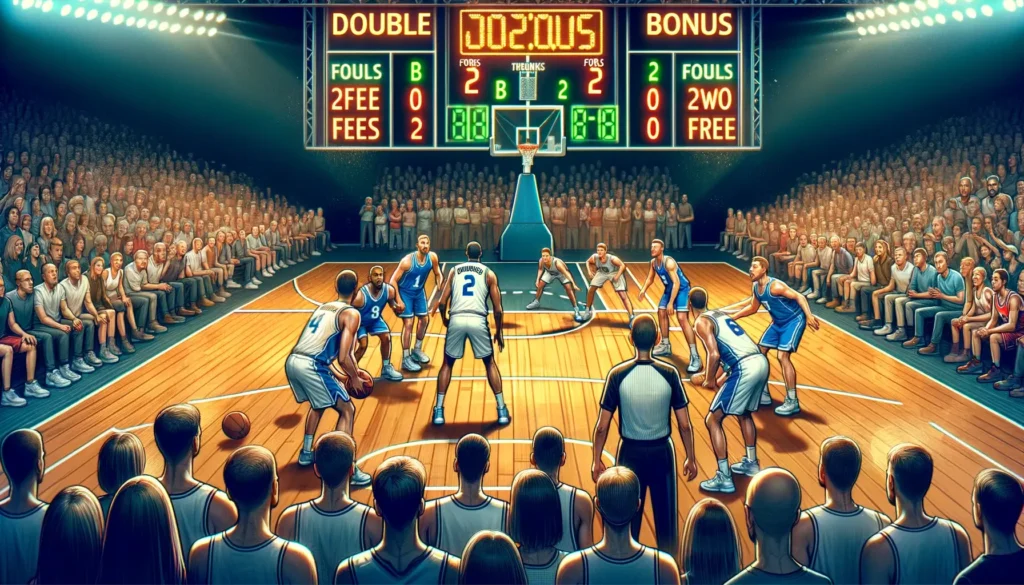
What Triggers a Double Bonus?
In both the NBA and NCAA, a double bonus is awarded under certain conditions – typically when a team commits a predetermined number of fouls (10 in NCAA and 5 in a quarter in the
NBA). This results in two free throws being awarded for every foul committed thereafter, instead of the “one-and-one” situation.
Strategies in Double Bonus Situations The double bonus scenario often prompts teams to adjust their gameplay. Offensively, teams may become more assertive in driving towards the basket, seeking to draw fouls and capitalize on the guaranteed free throw opportunities.
Defensively, teams must be cautious, refraining from unnecessary fouls to avoid giving away easy points.
Offensive Fouls and Their Role in the Basketball Bonus
The Influence of Offensive Fouls Offensive fouls, like charging, can turn the tide of a game. However, it’s important to note that these fouls generally do not contribute to a team’s bonus count.
This rule ensures that the bonus is focused on penalizing defensive indiscretions rather than offensive errors.
Adjusting Team Strategies Teams need to be aware of how offensive fouls interact with the bonus rule. While these fouls don’t count toward the bonus, they can still shift the momentum by causing turnovers or getting key players in foul trouble.
Coaches often design plays to either draw offensive fouls or avoid committing them, especially in tight game situations.
Strategic Implications in Basketball
When a team is in the bonus, it signifies a pivotal shift in the game’s strategy. This situation arises when a team accumulates a significant number of fouls – typically reaching the fifth foul in a quarter or the tenth foul in a half.
Every defensive foul committed thereafter, regardless of its nature, results in free throws for the opposing team. This rule effectively puts the fouling team in a penalty situation, where even the slightest infraction can cost them valuable points.

In leagues where the bonus resets every quarter, teams must constantly adapt their defensive strategies to avoid foul trouble. The implications are profound: a team that is in the bonus has to tread carefully, balancing aggressive defense with the risk of conceding easy points from the free-throw line.
Conversely, for the team with the bonus advantage, it opens up opportunities to capitalize on every foul, even earning points from situations that would not typically warrant a shot, like a non-shooting foul, by being awarded at least one free throw.
This aspect of the game requires teams to have a deep understanding of the rules and the ability to adjust tactics on the fly, making the bonus rule a critical factor in the rhythm and outcome of a basketball game.
The Last Two Minutes: Bonus Rule’s Critical Moments
The Importance of Bonus in Game’s Last Stretch In the concluding minutes of a basketball game, the bonus rule becomes increasingly significant.
Teams in the bonus have a strategic advantage, as they can potentially score from free throws without the clock running, crucial in close games.
Adapting Strategies for the Endgame In these high-stakes moments, teams might adjust their strategies significantly. For example, a team trailing in the score might intentionally foul to stop the clock, hoping the leading team misses their free throws, thereby creating an opportunity to close the point gap.
FIBA Bonus Rules vs. WNBA Bonus Rules: Diverse Bonus Rules
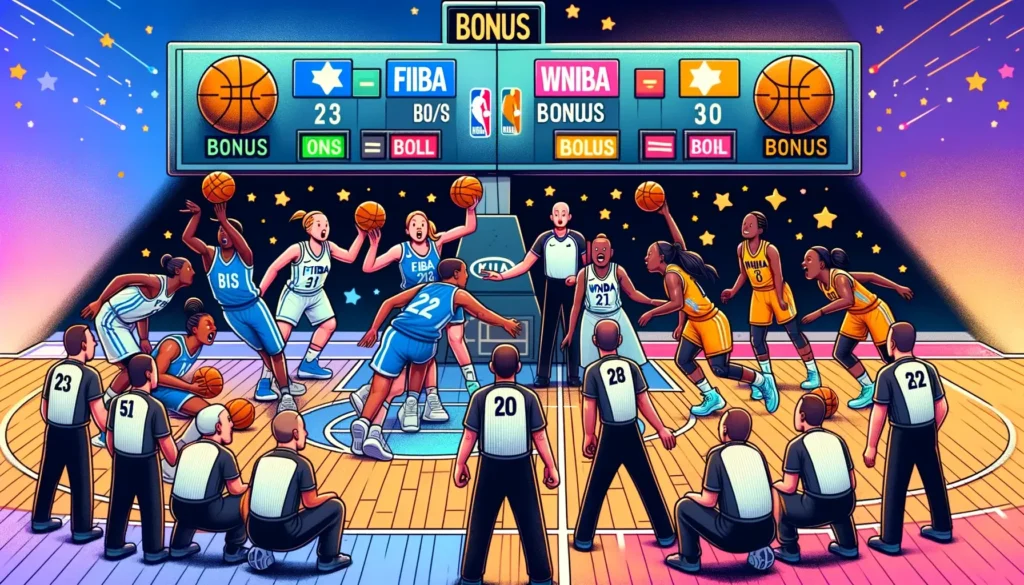
International and Women’s Basketball Regulations In FIBA (international basketball) and the WNBA, the bonus rules are distinct from those in the NBA and NCAA.
These differences can be in the number of fouls required to enter the bonus and how the bonus is applied during the game.
How They Differ from the NBA and NCAA Understanding these differences is crucial, particularly for players who transition between these leagues.
These variations require adjustments in playing style and strategy, as the timing and impact of the bonus can vary significantly.
Leveraging the NBA Bonus Rule in Game Strategies
Practical Applications by Teams Smart use of the bonus rule can be a game-changer. Teams often strategize to either reach the bonus early to maximize free-throw opportunities or to avoid fouling to keep the opposition out of the bonus. It’s a delicate balance that requires keen awareness and strategic planning.
Lessons from Professional Games Studying how professional teams utilize the bonus rule offers invaluable lessons in basketball strategy. Observing these games can provide insights into effective foul management, strategic fouling, and exploiting the bonus to one’s advantage.
Conclusion
In basketball, the concept of ‘bonus’ is integral to the game’s strategy and flow, affecting how teams approach both offense and defense. When a team commits many fouls – which varies between leagues like the NBA, NCAA, and high school basketball – the opposing team enters the ‘bonus’ situation.
In the NBA, this occurs after the fifth team foul in a quarter, while the NCAA and high school games have different thresholds. Entering the bonus means the fouled team gets free throw opportunities for each subsequent foul, even non-shooting fouls.
This rule significantly influences the game, especially in critical moments like the last two minutes of a match, where strategic fouling and free throw shooting can decide the outcome.
In the NCAA, the bonus structure includes a “one-and-one” situation, where the player must make the first free throw to attempt the second, adding a layer of pressure and excitement.
FAQS
What’s the deal with the ‘bonus’ in basketball?
Think of the ‘bonus’ as a critical twist in a basketball game. When a team commits a certain number of fouls (the exact number depends on the league), the opposing team enters the ‘bonus’.
This means for any additional fouls, the team in the bonus gets to shoot free throws, making every foul a potential scoring opportunity. It’s a bit like a yellow card in soccer, warning teams to play more carefully.
Does the bonus rule work the same in the NBA and college basketball?
Not quite! The NBA and NCAA play by different rules here. In the NBA, a team enters the bonus after the opposing team commits five fouls in a quarter.
In college basketball, it’s seven fouls in a half. Plus, the NCAA has this nail-biting ‘one-and-one’ situation, where if you make the first free throw, you get a second shot. Miss it, and the ball is back in play.
So, what’s this ‘double bonus’ I hear about?
The ‘double bonus’ is like hitting a foul jackpot. In the NBA, it happens after anyone commits its fifth foul in same quarter; in NCAA, it’s the tenth foul in a half.
Here, every foul (no matter the type) leads to two free throws. It adds a lot of pressure and can really change the endgame strategies
I’m new to following basketball – why should I care about the bonus rule?
The bonus rule adds a strategic layer to the game. As a fan, understanding it means you’ll get why teams suddenly change their play style.
Teams in the bonus might get more aggressive, knowing they can score from fouls. Meanwhile, the team with too many fouls has to tread carefully.
It’s a fascinating part of the game that can make or break those nail-biter moments, especially in close matches.

Mark Wilson is a sports writer who loves to share stories about different sports like baseball and soccer. He grew up in Chicago, USA, and always enjoyed watching and playing sports.





